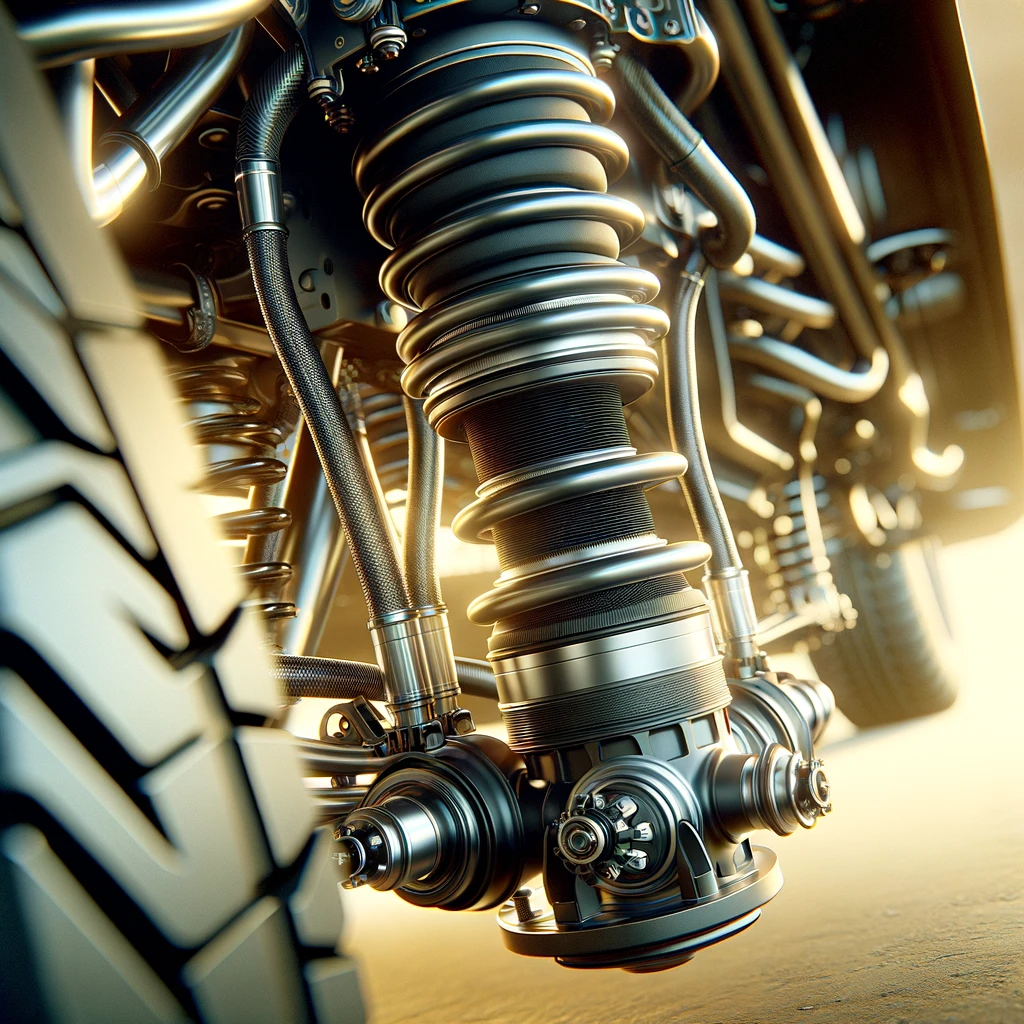In the world of automotive upgrades, air shocks stand out for their versatility and performance enhancement capabilities. Understanding how air shocks work unveils a journey into vehicular suspension innovation.
Air shocks replace coil springs with air-filled chambers, offering customizable suspension settings to match driving preferences. As your vehicle encounters road imperfections, the air within the shocks compresses or expands, ensuring a smoother ride. This dynamic adjustment sets air shocks apart.
The Anatomy of Air Shocks
The components of air shocks collaborate to optimize performance. A durable casing shields the air chamber from external elements. Enclosed within, a piston linked to the vehicle's frame moves with suspension action, regulating compression and rebound by forcing air in and out.
An essential part of air shocks is the air compressor and reservoir system, enabling real-time adjustments to air pressure. Drivers can fine-tune handling by modifying air pressure, adapting suspension stiffness to various road conditions, be it rough terrain or highway cruising.
Advantages of Air Shocks

Air shocks do more than enhance comfort; they evenly distribute weight across wheels, improving stability, especially under heavy loads. Their adjustability ensures precise ride height control, appealing to enthusiasts seeking perfect vehicle stance.
Moreover, air shocks enhance aesthetics by eliminating wheel gaps and providing a sleek, lowered profile. Whether pursuing an aggressive racer look or a laid-back cruiser vibe, air shocks offer flexibility without compromising performance.
Installing Air Shocks: A Step-by-Step Guide
When it comes to installing air shocks, active involvement is key to ensuring a smooth and successful process. Here's a step-by-step breakdown of how to get the job done right:
Removal of Old Shocks
- Lift and Secure the Vehicle: Begin by jacking up the vehicle and securely supporting it with jack stands to prevent any accidents during installation.
- Unbolt the Old Shocks: Use a wrench or socket set to loosen and remove the mounting bolts securing the old shocks to the vehicle's frame. Ensure thorough removal to prepare for the new shocks.
Preparation for New Shocks
- Apply Grease: Coat the mounting bolts with a thin layer of grease to facilitate smooth installation and prevent corrosion over time.
- Position the New Shocks: Align the new air shocks in place, ensuring they are properly oriented and ready for installation onto the vehicle's frame.
Installation of New Shocks
- Bolt the Mounts: Hand-tighten the mounting bolts to secure the new shocks firmly against the vehicle's frame.
- Follow Torque Specs: Use a torque wrench to apply the manufacturer's recommended torque settings for maximum stability and safety.
Connection of Air Lines
- Routing: Carefully route the air lines away from moving parts and sources of heat to prevent any potential damage or interference.
- Connection: Attach the air lines to the corresponding fittings on the air shocks, ensuring a secure and leak-free connection for proper functionality.
Testing and Finalization
- Check for Leaks: Inflate the air shocks to the recommended pressure using a tire inflator or air compressor, and listen for any hissing sounds that could indicate air leaks.
- Test Drive: Lower the vehicle off the jack stands and take it for a test drive to evaluate the performance and functionality of the newly installed air shocks.
Read more: What Is Air Shocks Installation?
Air Shocks: Unmatched Design
Understanding how air shocks work unlocks vehicle customization and performance possibilities. Their adaptive design and customizable settings offer unmatched versatility. Whether it's a smoother ride, improved handling, or a sleeker appearance, air shocks are a valuable investment for automotive enthusiasts.
Check out our selection at Airbagit.com and get the best products on the market!
Join our social media communities on Facebook and Instagram for best tips and deals in the industry!

